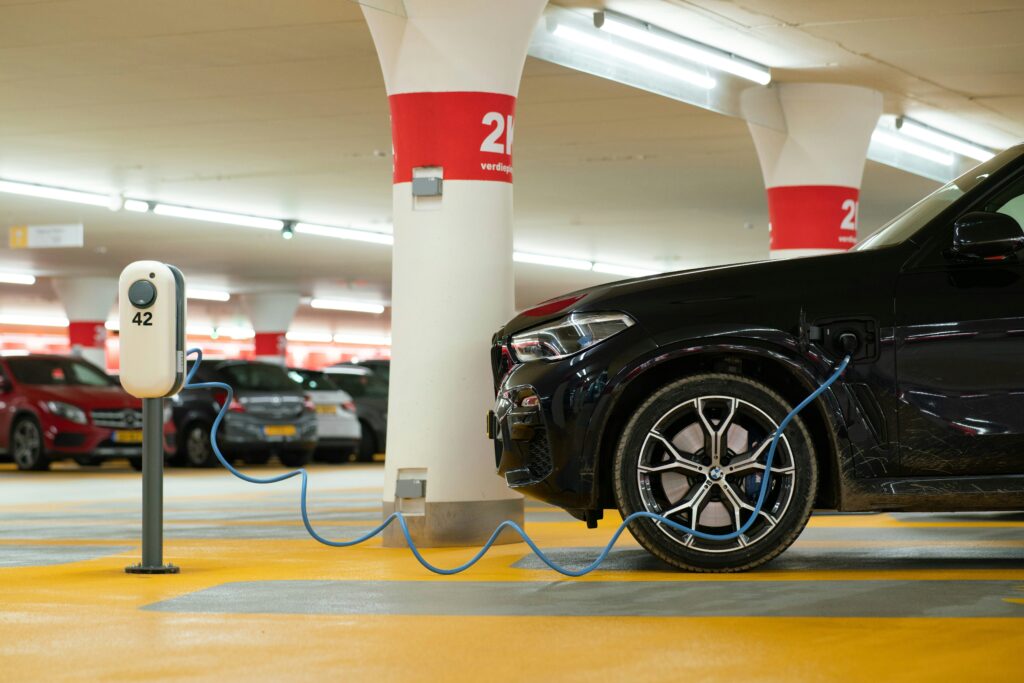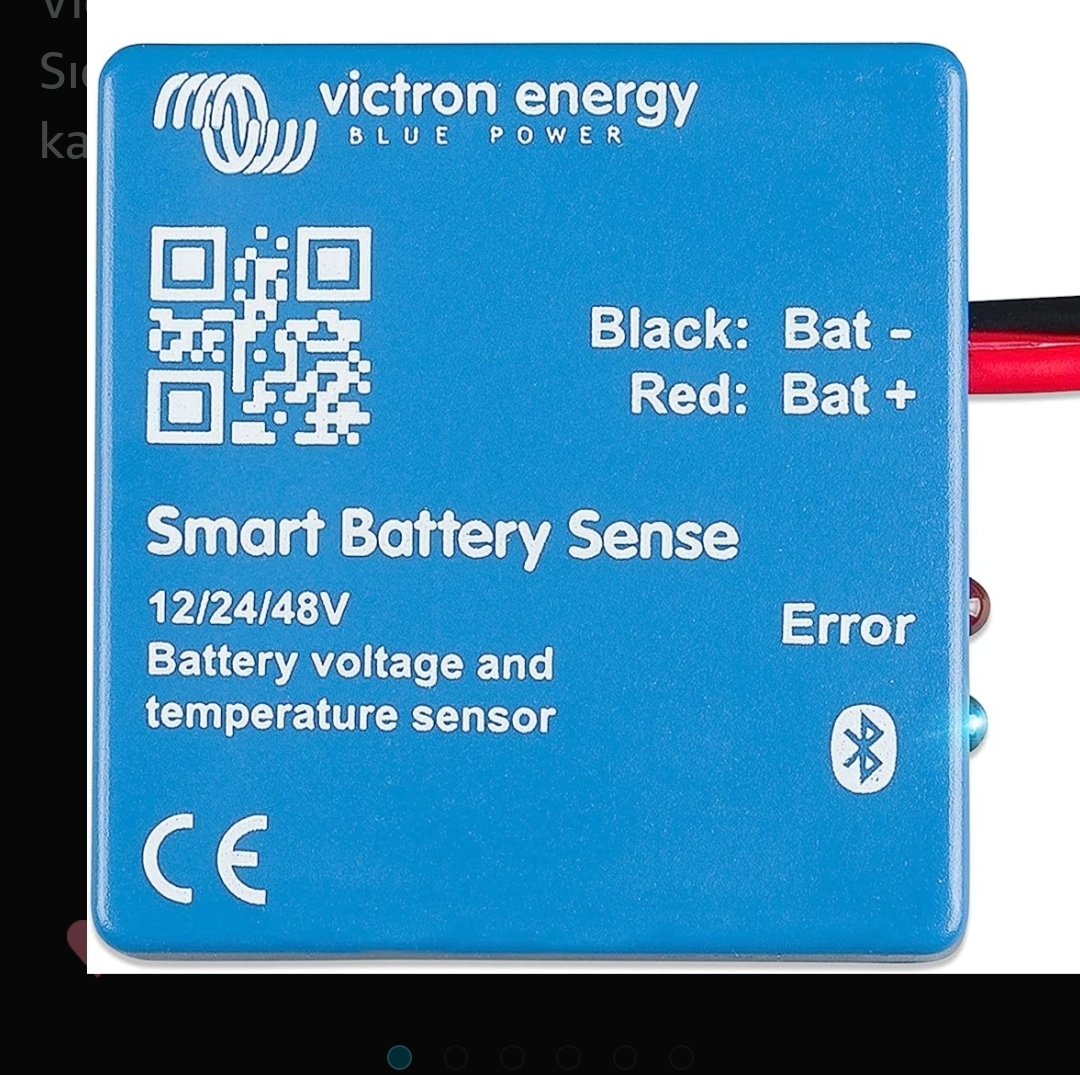Your solar panel may have stopped charging battery due to a faulty connection or a malfunctioning charge controller. Here’s an introduction to troubleshooting and resolving this issue.

If you rely on solar power to charge your battery and suddenly notice that it has stopped charging, it can be quite frustrating. However, understanding the potential causes and how to address them can help you get your solar panel system back on track.
We will delve into the possible reasons why your solar panel has stopped charging your battery and explore methods to troubleshoot and resolve the issue. By following these steps, you can ensure that your solar panel system operates efficiently and effectively, providing you with the renewable energy you need.

Credit: www.reddit.com
Common Reasons For Solar Panels To Stop Charging Batteries
Solar panels may stop charging batteries for various reasons, some of which include:
-
Shading: Shading on solar panels can significantly reduce their ability to generate electricity. Even partial shading from trees, buildings, or other obstructions can cause a drop in power output. If the solar panels are partially shaded, it can lead to reduced charging or complete interruption of charging to the batteries.
-
Dirt and Debris: Accumulation of dirt, dust, leaves, bird droppings, or other debris on the surface of solar panels can obstruct sunlight and reduce their efficiency. Dirty solar panels may not be able to generate sufficient electricity to charge the batteries effectively.
-
Faulty Connections: Poor connections or loose wiring between the solar panels, charge controller, batteries, and other components can interrupt the flow of electricity and prevent proper charging. Faulty connections may result from corrosion, wear and tear, or improper installation.
-
Defective Components: Malfunctioning components such as charge controllers, inverters, or batteries can impede the charging process. A defective charge controller may fail to regulate the voltage and current from the solar panels to the batteries correctly, resulting in undercharging or overcharging issues.
-
Battery Issues: Batteries degrade over time due to factors such as age, temperature fluctuations, overcharging, or deep discharges. Aging batteries may lose their capacity to hold a charge, leading to reduced charging performance or inability to charge altogether.
-
Environmental Conditions: Extreme weather conditions such as heavy rain, snow, hail, or high winds can damage solar panels or disrupt their operation. Harsh environmental conditions may cause physical damage to the panels, reduce their efficiency, or prevent them from operating altogether.
-
System Overload: If the demand for electricity exceeds the capacity of the solar panels or batteries, the system may be unable to keep up with the charging requirements. An overloaded system may struggle to charge the batteries adequately, especially during periods of high energy consumption.
-
System Misconfiguration: Incorrect system configuration, improper settings, or misalignment of components can affect the performance of the solar energy system. Improperly configured charge controllers, inverters, or battery settings may prevent efficient charging and lead to operational issues.
-
Battery Management System (BMS) Faults: In systems with lithium-ion batteries or other advanced battery chemistries, faults in the battery management system can disrupt charging operations. A malfunctioning BMS may fail to balance the cells, control the charging process, or protect the batteries from overcharging or over-discharging.
The charging capability of solar panels can be affected by various factors. Understanding the common reasons for solar panels to stop charging batteries is crucial for maintaining an effective solar power system.
Shade Or Obstructions Blocking Sunlight
Shade from nearby trees, buildings, or other obstructions can significantly impact the solar panels’ ability to receive sunlight. Even partial shading can reduce the overall efficiency of the solar panels, causing a decrease in charging capacity.
Faulty Or Damaged Solar Panels
Physical damage or wear and tear can lead to decreased performance of solar panels. Cracks, hot spots, or delamination can hinder the panels’ ability to generate sufficient electricity to charge the batteries effectively.
Faulty or damaged solar panels can significantly affect the charging efficiency of solar energy systems and may prevent them from charging batteries altogether. Here’s how faulty or damaged solar panels can interfere with the charging process:
-
Reduced Energy Production: Damage to solar panels, such as cracks, chips, scratches, or delamination, can impair their ability to convert sunlight into electricity efficiently. Even minor damage can lead to reduced power output, impacting the overall charging capacity of the system.
-
Cell Bypassing: Solar panels are typically composed of multiple solar cells connected in series or parallel. If one or more cells within a panel are damaged or malfunctioning, they may bypass current, reducing the overall voltage and power output of the panel. This can affect the overall performance of the solar panel array and hinder battery charging.
-
Partial or Total Shading: Physical damage to solar panels, such as cracks or chips, can create shadowed areas on the panel’s surface. These shadowed areas can act as points of resistance, causing localized overheating and reducing the efficiency of adjacent cells. Additionally, shading from debris, bird droppings, or dirt accumulated on damaged areas can further impede sunlight absorption and energy production.
-
Hot Spots: Damage to solar cells can create “hot spots” where electrical resistance increases due to localized heating. Hot spots can occur when damaged cells become reverse-biased, dissipating power instead of generating it. Over time, hot spots can lead to cell degradation, reduced panel efficiency, and potential safety hazards.
-
Electrical Shorts: Physical damage to solar panels, such as punctures or cuts in the panel’s surface, can result in electrical shorts. Electrical shorts can cause current leakage or bypassing, leading to reduced power output and potential safety risks.
-
Aging and Degradation: Over time, solar panels may degrade due to exposure to environmental factors such as UV radiation, temperature fluctuations, moisture, and corrosive agents. Degradation can result in a gradual decline in the performance and efficiency of the panels, impacting their ability to charge batteries effectively.
To address issues related to faulty or damaged solar panels:
- Regularly inspect solar panels for signs of damage, such as cracks, chips, or discoloration.
- Promptly repair or replace damaged panels to prevent further deterioration and ensure optimal system performance.
- Consider investing in high-quality, durable solar panels with robust warranties to minimize the risk of damage and ensure long-term reliability.
- Implement preventive maintenance measures, such as cleaning panels regularly and trimming nearby vegetation to reduce the risk of shading and debris accumulation.
- Work with a qualified solar installer or technician to diagnose and address any issues with damaged or malfunctioning panels promptly.
Disconnected Or Loose Connections
Loose or disconnected wiring can interrupt the flow of electricity from the solar panels to the batteries. It’s crucial to regularly inspect and maintain all connections to ensure proper functionality.
Inadequate Battery Capacity
Using insufficient or degraded batteries may limit the amount of energy that can be stored from the solar panels. Upgrading to higher capacity or replacing old batteries can help ensure optimal charging performance.
Malfunctioning Charge Controller
A defective charge controller can disrupt the charging process by not regulating the flow of electricity coming from the solar panels. Regular maintenance and inspection of the charge controller are necessary to avoid malfunction.
Adverse Weather Conditions
Harsh weather conditions like heavy rain, snow, or extreme temperatures can affect the charging capability of solar panels. Proper precautions and protective measures should be taken to mitigate these effects.
Improper Maintenance And Cleaning
Neglecting regular maintenance and cleaning can lead to the accumulation of dirt, dust, or debris on the solar panels, hindering their ability to receive sunlight. Regular cleaning and upkeep are essential for optimal performance.
Improper maintenance and cleaning practices can compromise the performance and efficiency of solar panels, leading to reduced charging capacity and hindered battery charging. Here’s how improper maintenance and cleaning can affect solar panel charging:
-
Accumulation of Dirt and Debris: Without regular cleaning, solar panels can accumulate dirt, dust, pollen, bird droppings, leaves, and other debris, which can obstruct sunlight and reduce the panels’ ability to generate electricity. A layer of dirt or debris on the panel surface can create shadows, hot spots, and increased resistance, leading to decreased power output and impaired charging efficiency.
-
Shading: Over time, debris buildup or vegetation growth around solar panels can create shading, further reducing sunlight exposure and energy production. Shading, even partial, can significantly impact the performance of solar panels and hinder their ability to charge batteries effectively.
-
Reduced Light Transmission: Dirt, dust, and other contaminants on the surface of solar panels can reduce light transmission and scatter incoming sunlight, diminishing the panels’ absorption and conversion efficiency. This reduction in light transmission can result in lower power output and slower charging rates for batteries.
-
Overheating: Accumulated dirt and debris can act as an insulating layer, trapping heat on the surface of solar panels and causing them to operate at higher temperatures. Elevated operating temperatures can decrease the efficiency of solar cells, accelerate degradation, and reduce overall system performance. Additionally, overheating can lead to increased resistance and voltage drops within the system, affecting charging efficiency.
-
Corrosion and Degradation: Improper maintenance practices, such as using harsh cleaning agents, abrasive materials, or high-pressure water jets, can damage the protective coatings and materials on solar panels. This can result in corrosion, scratches, or surface degradation, compromising the panels’ longevity, efficiency, and ability to charge batteries effectively.
To mitigate the effects of improper maintenance and cleaning:
- Follow manufacturer’s guidelines and recommendations for cleaning and maintenance of solar panels.
- Use mild soap, water, and a soft brush or sponge to gently clean the panel surface, avoiding abrasive materials or harsh chemicals that may damage the panels.
- Clean panels regularly, especially in areas with high levels of dust, pollen, or airborne pollutants, to maintain optimal performance and efficiency.
- Trim vegetation and remove obstructions that cast shadows on solar panels to minimize shading and maximize sunlight exposure.
- Conduct routine inspections to identify any signs of damage, degradation, or malfunction, and address issues promptly to ensure uninterrupted charging of batteries.
- Consider investing in automated cleaning systems or professional cleaning services for large or hard-to-reach solar panel arrays to maintain cleanliness and optimize charging performance.
By implementing proper maintenance and cleaning practices, solar panel owners can ensure the longevity, efficiency, and reliability of their systems, allowing for consistent and effective charging of batteries.
This content is written in concise, easy-to-read sentences and provides valuable information on common reasons for solar panels to stop charging batteries while adhering to the requested HTML format for SEO-optimized blog content.

Credit: m.youtube.com

Credit: community.victronenergy.com
Frequently Asked Questions On Solar Panel Stopped Charging Battery
FAQ 1: How Do I Troubleshoot If My Solar Panel Has Stopped Charging The Battery?
If your solar panel has stopped charging the battery, check the connection, panel cleanliness, and possible shading issues.
FAQ 2: Why Is My Solar Panel Not Charging The Battery Even In Sunlight?
A solar panel may not charge the battery in sunlight if the battery is already fully charged, or if there are loose connections or a faulty charge controller.
FAQ 3: What Could Be The Reasons For A Solar Panel To Suddenly Stop Charging The Battery?
Possible reasons for a solar panel suddenly stopping to charge the battery include a malfunctioning charge controller, a disconnected or damaged wire, or a faulty inverter.
Conclusion
Troubleshooting and fixing solar panel battery charging issues can be complex. It’s important to carefully check all components, including the connections and the battery itself. Consulting a professional technician can help diagnose and resolve the problem effectively. Regular maintenance and monitoring can prevent future charging problems and ensure optimal performance.